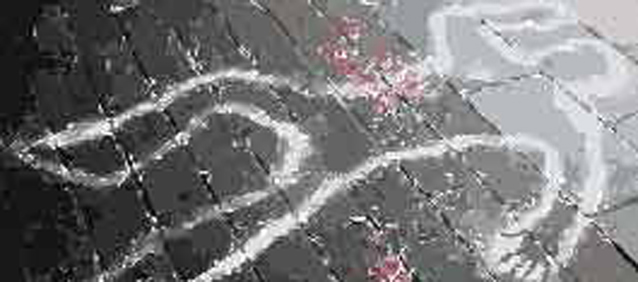Illustration as a visual language


Illustration helps artists to put into practice the technical abilities they may have acquired through any prior lessons in drawing
Knowledge Mushohwe Art Zone
Illustration — any artwork, normally two-dimensional, which is designed to elucidate or decorate a story, poem, concept or piece of information by providing a visual interpretation — is widely seen in art circles as the advanced version of drawing lessons.
Illustration may be employed to convey any message visually, be it educative, marketing, informative or simply for entertainment purposes.
One example of illustration, editorial and conceptual illustration, may be either informative or entertaining, or both.
It includes editorial cartoons that amuse readers or highlight pertinent issues through symbolism.
Information graphics or infographics, a visual medium used by scientists, technicians, teachers and journalists for explaining news as well as inventions, theories, games, accidents or structures of buildings, machines and living beings are another example of editorial and conceptual illustration.
The purpose of using information graphic is to illustrate and clarify difficult issues so that the readers can more easily conceptualise and understand complex structural aspects, stages of a process, as well as effects and causes of an action.
Illustration for information design and illustration for dynamic media are other avenues that artists are exploring so as to both communicate and make a living out of.
Other examples of illustration include book illustrations, including book cover designs, and graphic novels, books that carry a narrative conveyed by pictorial representations, as well as Illustration for 3D packaging.
Fashion advertising in Zimbabwean newspapers from the 1970s and 80s was almost exclusively made up of illustrations.
Printing was not as advanced as it is today, making the quality of reproduced line drawing better than that of a photograph.
Today, illustration for fashion advertising is making a comeback, not because of its yesteryear advantage but because clients are finding it to be unique and having better expressive power.
Fashion advertising is a rich area for today’s illustrators.
Illustration for environmental design and murals are other examples of illustration.
Illustration helps the artists to put into practice the technical abilities they may have acquired through any prior lessons in drawing.
Illustration aids its appendices how to develop an understanding of careers in, and functions of illustration as well as further enhance their visualisation skills through drawing and painting both on and off the computer.
Experimentation and taking creative risks are encouraged as illustrators practice visual problem-solving all the time.
Simply having an ability to draw in today’s increasingly competitive environment no longer guarantees success.
A theoretical understanding of, and a technical ability in illustration may not guarantee success, but certainly increases the odds for today’s young Zimbabwean artists.
To start off, an artist interested in becoming an illustrator has to have knowledge of the profession and how it has evolved since its beginnings in the golden age of illustration, when cameras were yet to be invented and every pictorial message, on marketable products, in newspapers and everywhere else was in the form of traditional hand-drawn illustrations.
It may also be important for would-be illustrators to have an understanding of how illustration is used in graphic and digital design today.
One-point, two-point and three-point perspective as well as angles and the human figure in perspective are some of the most important aspects of illustration.
For young artists to later become competent illustrators, the above combinations as well as an understanding of integration of colour and space are invaluable components of an introduction to the art genre.
Illustration relies heavily on line art.
Because art in this form is normally created then reproduced in some manner for mass circulation, theories in line art can only help fresh illustrators to flourish.
Line, shape, tone, texture, volume, proportion, shadow, composition, and scale in illustration cannot be ignored if one it to become an accomplished artist in this art form.
Additionally, illustrators have to experiment through exploration of traditional mediums such as gouache, acrylic, oil, watercolour, pastel, scratchboard, pen and ink, charcoal, graphite, pencil and crayon.
Every artist’s style is different and the experimentation gives each a full range of what impressions he or she can produce.
One shortcoming of Zimbabwe’s learning experience for an artist is that he or she is only schooled in the technical aspects of art yet the processes of what they can expect in industry is ignored.
Understanding what a client brief and working with an art director, and the role of a client in an advertising agency setting prepares a would-be illustrator well for the tasks ahead.
Researching and generating reference material for illustration projects, and using drawings as a method for exploration, composition, conceptual development, storyboarding, and communication form part of the young illustrator’s learning curve.
For young Zimbabwean artists, drawing without a message is not selling now or ever.
There is need for one to develop as an illustration because, once one has the requisite abilities in the art form and has knowledge of the theoretical aspects of the genre, the possibilities are unlimited.










Comments